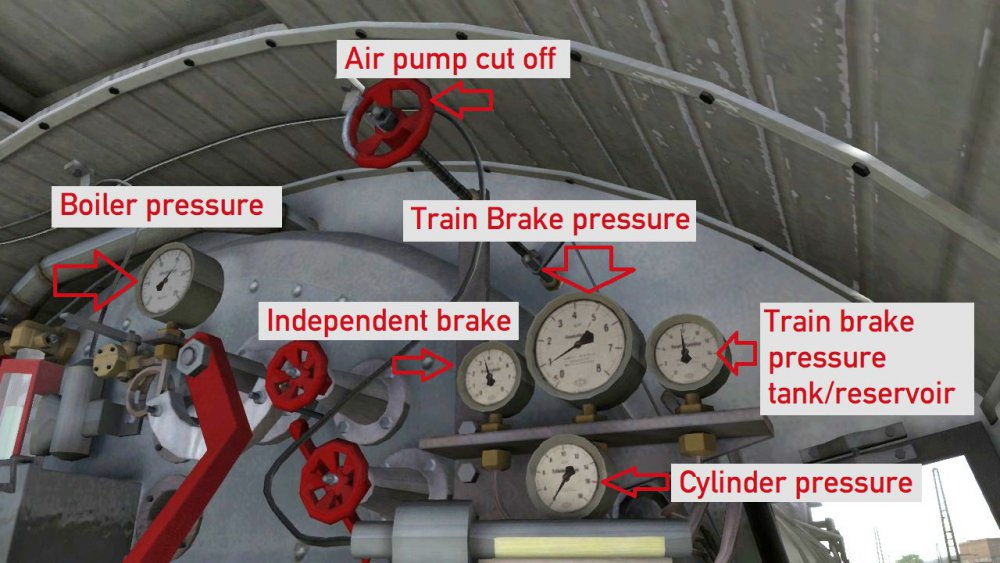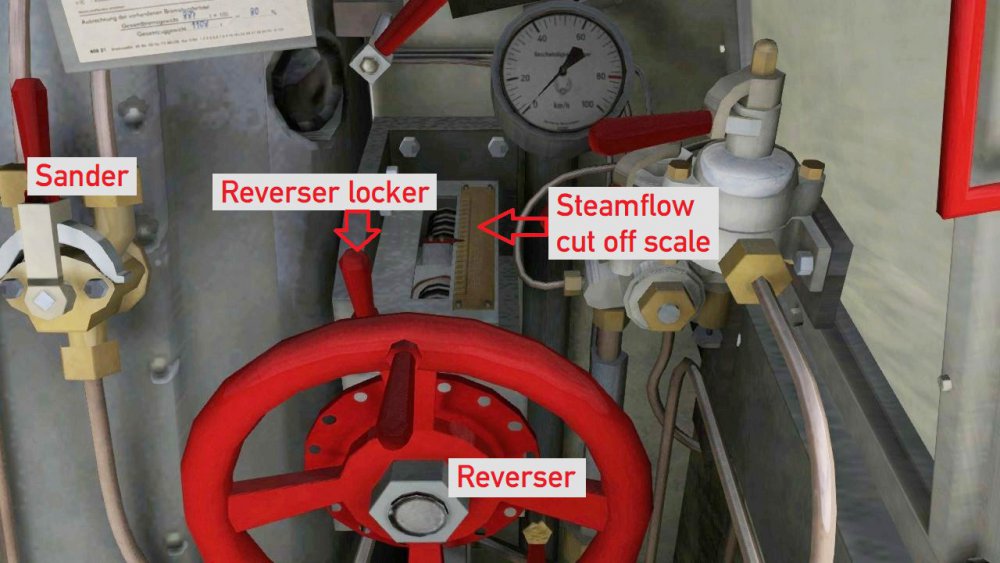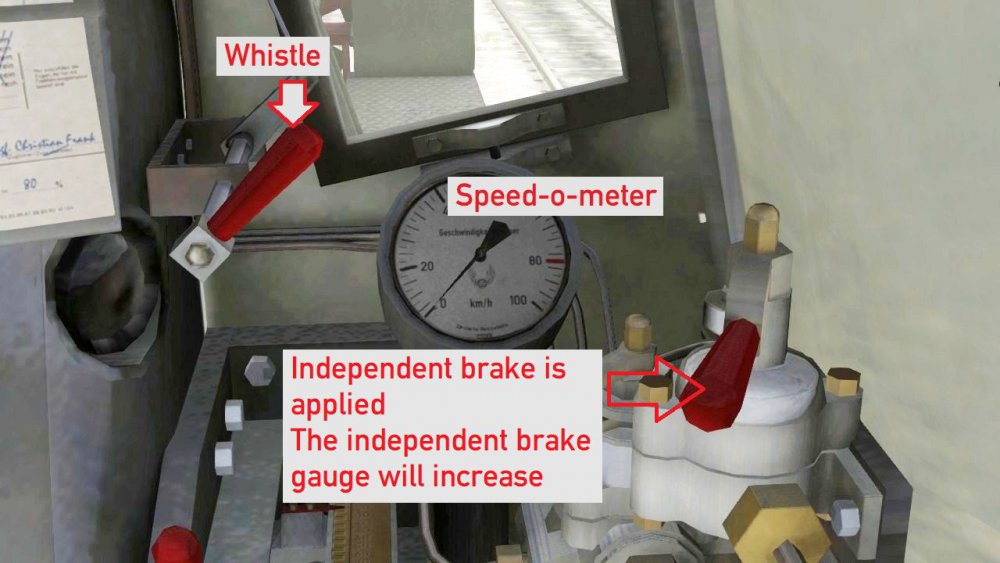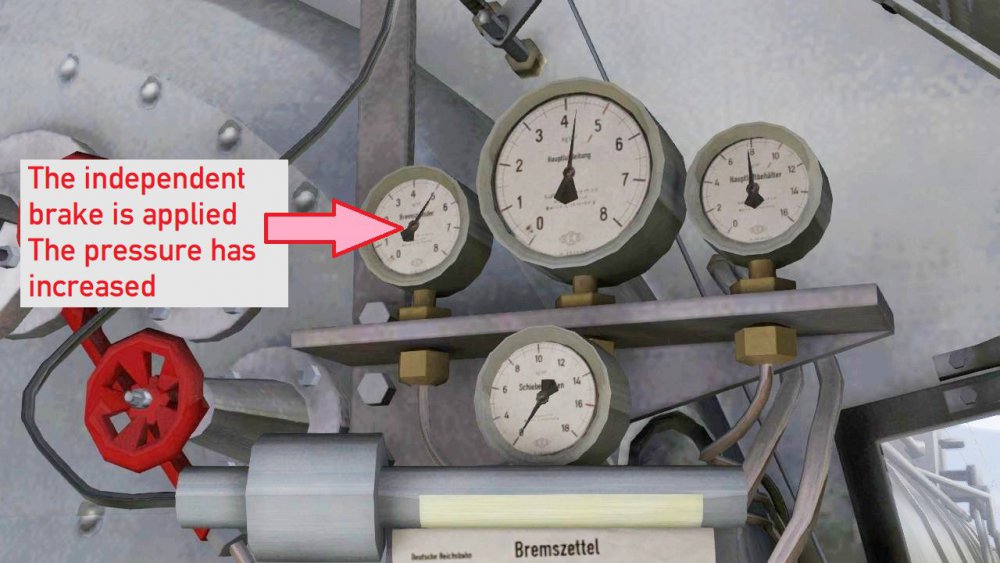Now when you have walked through all the steps as mentioned in de blogs before this one, you should have your boiler on pressure right now. When you take a look at the boiler pressure gauge, the needle should near 16 Bar/Atm (-/+ 235 PSI) and this is the right pressure to pop off with your engine. Now take a look at the screenshot of the 4 gauges that are mounted together on a small rig and take a close look to these 4 gauges.
Now first before you hook on your train you need to check the pressure of the brakes. and be sure you check the brakes! You open the air pump by opening up the spindle that is connected with the steam valve that operates the air pump. Now open up the air valve by turning the spindle clockwise and the air pump will start working. Check out your main brake air pressure gauge and the needle should rise untll about 5,5 Bar/Atm. Now set your handbrakes before you test the brake system. you apply the handbrakes by pressing the [ / ] (slash) Button.
Now as the handbrakes are set you now are able to proof the brakes of the engine. We are still operating the class Br 52 of the DR and at your right hand you will notice two levers on top of or near and above each other just aside of the side windows. Now push the upper lever away from you so that upper lever appoints towards the front of the engine. You can also press and hold the [ } ] button to release the independent brake. As you now listen you will hear the engine brake that is releasing.
The way the engine brakes is operating is different in comparison of the train brake. You are using air pressure to release the engine brake. Normally a train brake uses air pressure to get the train brake released, but you now increase the air pressure in the engine brake system to operate the brake properly. This brake system has several names like "Independent brake", "Local brake", "Engine brake" or "Loco(motive) brake". When you push forward the lever the air pressure will decrease and will now release the "Independent brake" The pressure in the brake system will drop and when the gauge shows 0 Atm/Bar (Zero). This gauge is smaller than the main brake gauge and is mounted left of the main brake gauge. Now you are able to pop off.
The independent brake is completely released. When you now operate the lever in opposite direction (towards you) the air will operate/apply the independent brake and the engine should stop (if the engine was moving). Watch now the Gauge ais the pressure increased while you are applying the independent brake.
Okay so far, so good. Now you have tested and proof the engine brakes/independent brake.
Now you are ready to go the first meters.
At the next step we will shunt and hook on our train.




